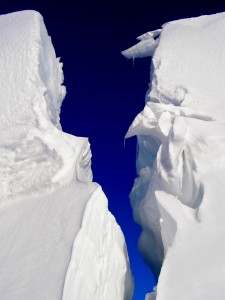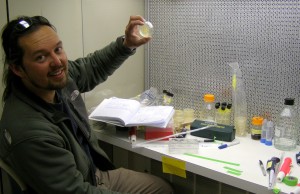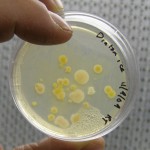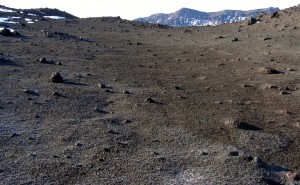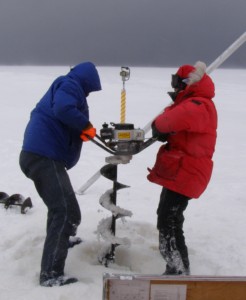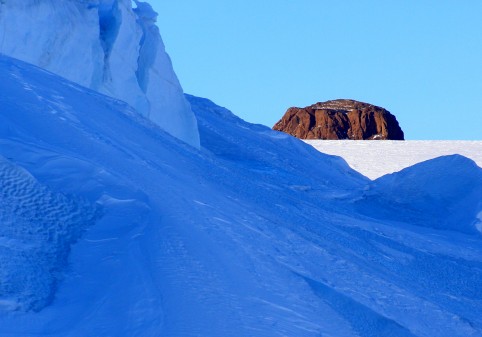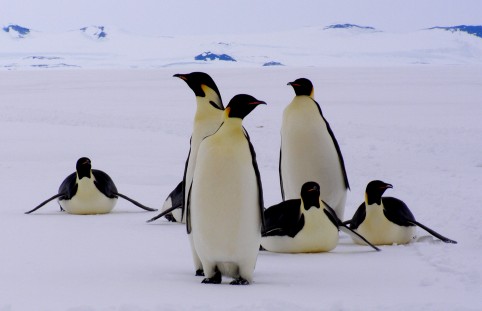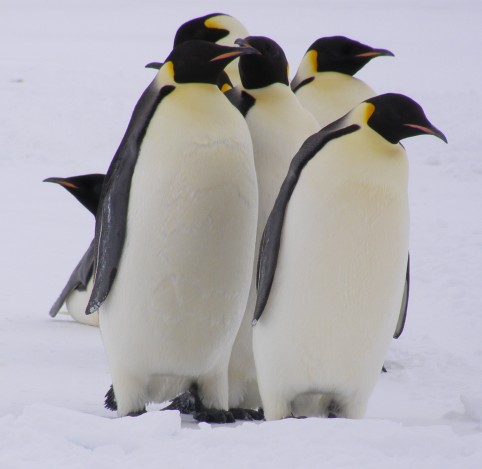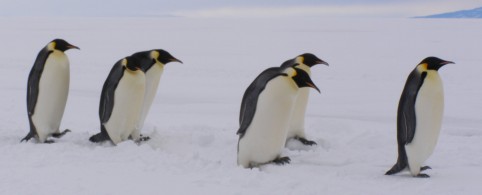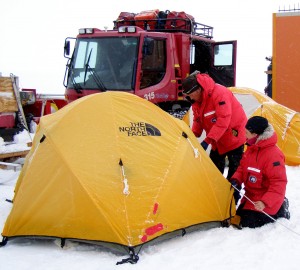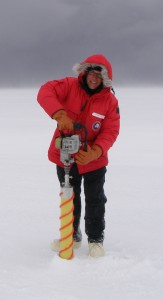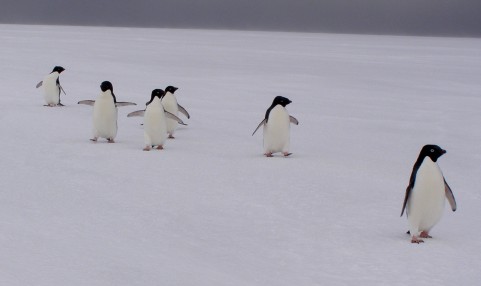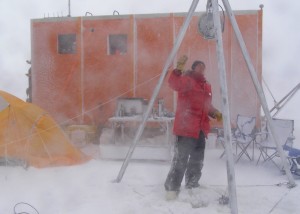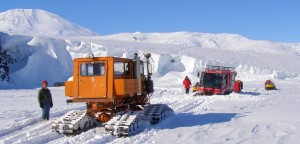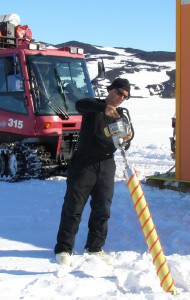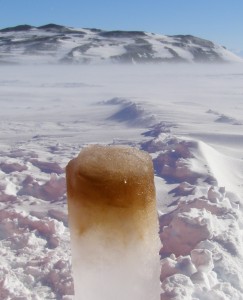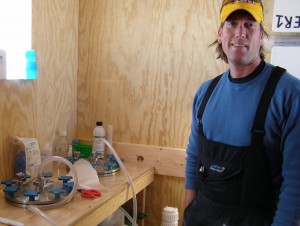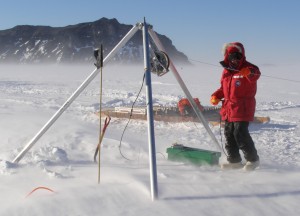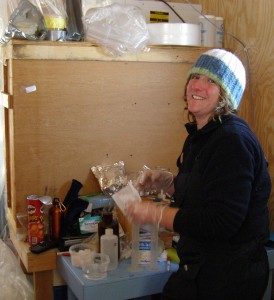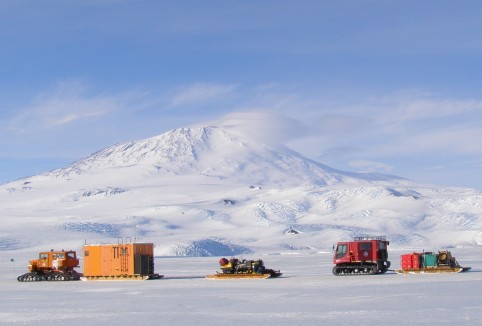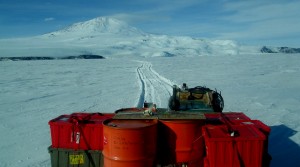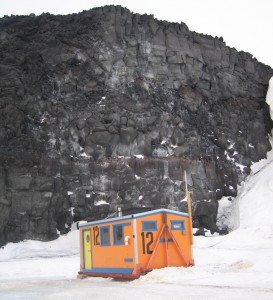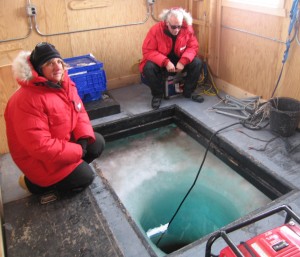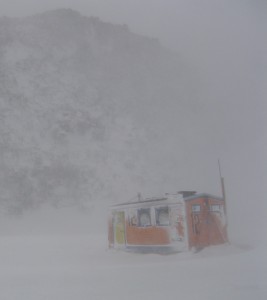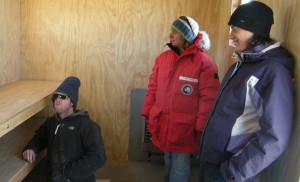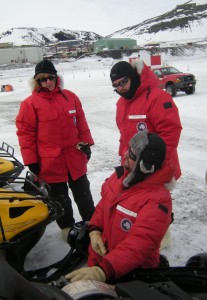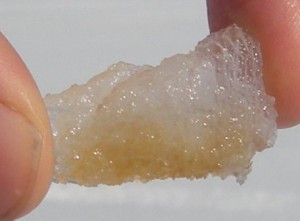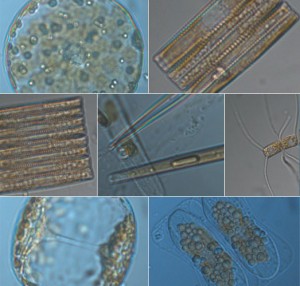After we took our samples out at the ice edge, we returned to McMurdo Station for several intense days of demobilization. We had to return all of the large drills, power equipment and camping gear, and spent a considerable time preparing our own gear for shipment back to the United States. Our samples and some of our critical gear will go by air transport to Port Huemene in California, and the rest will be shipped back to the US by icebreaker during the January sealift. In order to preserve the DNA and RNA of our plankton samples, we froze them in the field in liquid nitrogen: these samples will be air-shipped on dry ice to the J. Craig Venter Institute, where both DNA genetic code and RNA messages will be sequenced and decoded.
Mak Saito and his group will similarly take the phytoplankton protein samples back to the Woods Hole Oceanographic Institution and use a mass spectrometer to identify the protein fragments. The protein fragments . Mak’s group also had some success culturing psychrophilic bacteria: psychrophiles are organisms which live around the freezing point, though many of the mechanisms which allow them to survive are unknown. By
bringing back some live bacterial cultures to the laboratory, we will be able to grow them and study how both bacteria and larger phytoplankton can tolerate cycles of freezing and thawing, and also how the various proteins and enzymes in them remain flexible enough to function.
One student wrote in and asked if plants only grew in the sea ice and not on land. the best answer I can give is that the temperatures in the sea ice are relatively stable: at the ice-water interface, the temperature is a constant 28 degrees Fahrenheit (-1.8 Celsius). If organisms can adapt to
that environment, then conditions are relatively stable for life. In contrast, life on land is relatively harsh, and in one day the soil surface can go from warm and sunlit to being raked by freezing 50 mph winds. I understand that there is a type of moss which grows near the streams in the McMurdo Dry Valleys, and I understand that there are some lichens around Cape Royds, but other than that the conditions are too harsh for land plants: all of the plant activity is in the ocean, growing as phytoplankton!
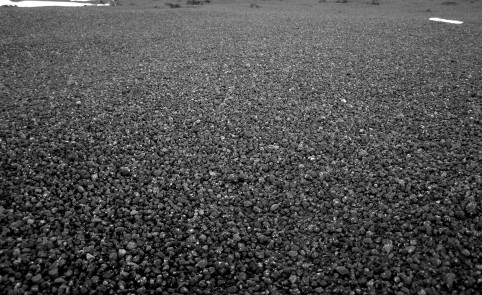
Close-up of desert pavement in Antarctica: Winds are so strong that small grains are blown away, leaving only gravel to 'pave' the surface of the soil
This brings up a good point: we love to hear your questions and comments, particularly from students and the public. if you have been following this blog, and have and found it interesting, or want to know more about any of the topics covered here (polar biology, plankton, life in Antarctica), you can
leave us a message at the bottom of this blog page. For the educators and classrooms which have been following this blog, let us know if you would be interested in having one of our scientists visit and give a presentation on polar science to your class: we love to talk about our work, and would be thrilled with the opportunity to talk to your students.
So what lies ahead? Our frozen samples arrive next week, and starting in January I will extract the DNA and begin the long process of preparing the samples for sequencing. Collecting the samples was just the beginning, and we will be processing the samples and data for months to come - keep an eye on this website for periodic updates on our discoveries.
I’ll finish off this post with a picture I took of Castle Rock on our last night in Antarctica. While we were all eager to return home, we hadn’t seen the sun set once in three weeks, and it is moments of sublime beauty like this picture of Castle Rock glowing at midnight which keep polar biologists coming back year after year. Enjoy!

